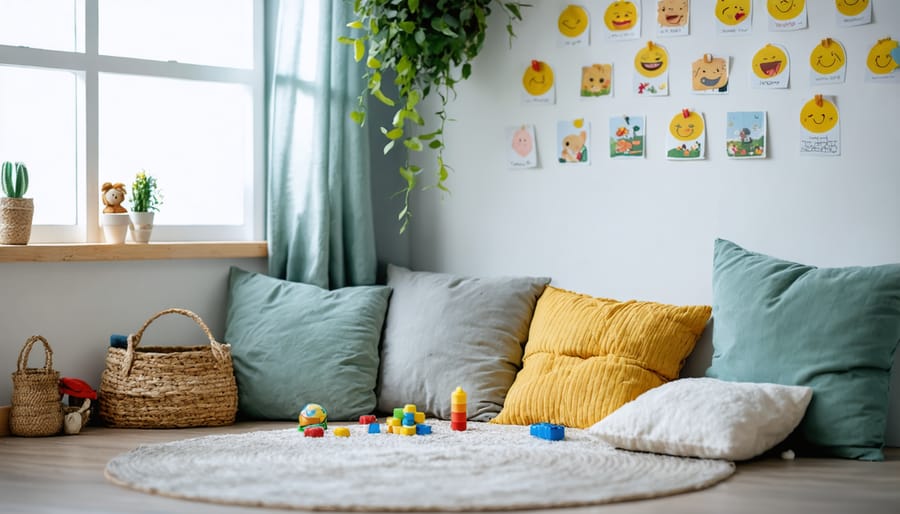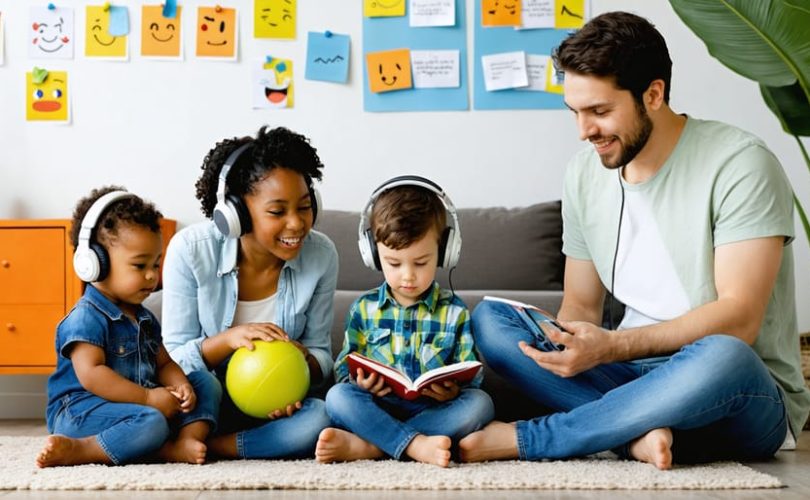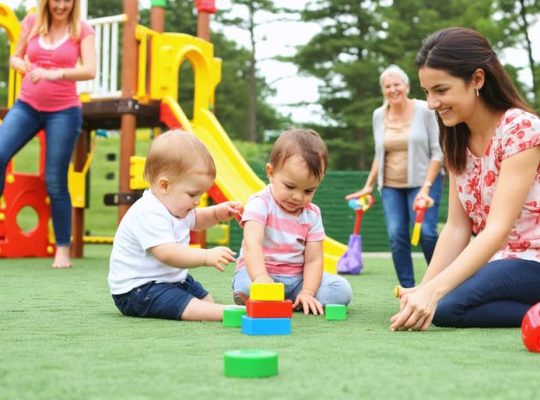When your child throws a tantrum in the grocery store or your teenager slams their bedroom door, emotional regulation becomes more than just a parenting concept – it becomes an urgent need. Understanding how to manage intense feelings isn’t just crucial for our children; it’s essential for everyone in the family.
Picture this: A toddler learning to take deep breaths when frustrated with a puzzle, a school-age child creating their own quiet corner for decompressing after a tough day, or a teenager journaling their way through complicated emotions. These real-world examples of emotional regulation aren’t just theories – they’re practical tools that transform challenging moments into opportunities for emotional growth.
As parents and caregivers, we often witness the raw intensity of emotions in our children, but we also hold the key to helping them develop lifelong coping skills. Whether you’re dealing with meltdowns, anxiety, or overwhelming feelings, having a toolkit of proven emotional regulation strategies can make the difference between chaos and calm in your household.
Let’s explore practical, effective examples of emotional regulation that you can implement today, making emotional intelligence an achievable reality for your family.
Understanding Emotional Regulation in Children
Age-Appropriate Expectations
Understanding age-appropriate emotional regulation helps set realistic expectations for children’s behavioral development. Toddlers (ages 1-3) typically express emotions intensely and may struggle with basic self-soothing, often needing immediate adult support during tantrums or frustration.
Preschoolers (ages 3-5) begin developing basic coping strategies but still require significant guidance. They might use simple techniques like deep breaths or asking for hugs when upset. School-age children (ages 6-11) can usually identify their emotions and employ learned coping strategies, though they may need reminders during intense situations.
Teenagers (ages 12-18) generally understand complex emotions but face new challenges due to hormonal changes and increased social pressures. They benefit from more sophisticated regulation techniques and appreciate being treated as emotional equals.
Remember that every child develops at their own pace, and these are general guidelines rather than strict rules. Some children may master certain emotional skills earlier, while others might need additional support or time to develop specific capabilities. Celebrating small improvements and maintaining consistent support helps build emotional competence at any age.

Everyday Emotional Regulation Scenarios and Solutions
Managing Frustration During Homework
When homework frustration strikes, having a toolbox of strategies can make a significant difference. Start by creating a calm study environment and breaking assignments into smaller, manageable chunks. If your child begins to show signs of frustration, encourage them to take a brief “brain break” – perhaps a 5-minute walk or some stretching exercises.
Teaching deep breathing techniques can be particularly effective. Guide your child to take three slow breaths while imagining blowing up a balloon. This simple exercise can help reset their emotional state and improve focus.
Another helpful approach is the “feeling scale” method, where children rate their frustration from 1-5 and choose appropriate coping strategies for each level. For instance, at level 3, they might need to stand up and shake out their hands, while level 4 might require a longer break.
Remember to validate their feelings while maintaining boundaries: “I understand this math problem is really tough, and it’s okay to feel frustrated. Let’s try a different approach together.” This combination of emotional support and practical problem-solving helps children develop resilience while working through academic challenges.
Dealing with Playground Conflicts
Playground conflicts provide excellent opportunities for children to practice emotional regulation. When a child is upset because someone won’t share the swing or feels left out of a game, parents and teachers can guide them through these challenging moments with empathy and practical strategies.
Start by acknowledging the child’s feelings: “I see you’re feeling frustrated because Tommy won’t let you have a turn.” This validation helps children feel understood and sets the stage for problem-solving. Encourage deep breathing or counting to ten before reacting, giving them time to process their emotions.
Guide children to use “I feel” statements instead of accusations: “I feel sad when I can’t play” rather than “You’re mean!” This approach helps maintain friendships while expressing emotions appropriately. Teach them to negotiate solutions, such as using a timer for turns or finding alternative activities.
Remember that these situations are learning opportunities. Praise children when they handle conflicts well: “I noticed how you waited patiently for your turn. That was very mature of you!” This positive reinforcement helps build confidence in their ability to manage future social challenges.
Handling Big Emotions at Bedtime
Bedtime can trigger intense emotions in children, from anxiety about separation to excitement that makes settling down difficult. Creating healthy bedtime routines helps children manage these big feelings effectively.
Start by acknowledging your child’s emotions without judgment: “I see you’re feeling energetic right now. Let’s find a calm way to use that energy.” Consider implementing a wind-down routine that includes gentle activities like stretching, deep breathing exercises, or quiet reading.
When children express bedtime fears, validate their feelings while offering reassurance. Try creating a “worry box” where they can symbolically place their concerns before sleep. Simple techniques like imagining a peaceful place or using a comfort object can help children feel more secure.
For overwhelming emotions, guide your child through the “turtle technique” – taking slow breaths while imagining retreating into a safe, comfortable shell. This visualization helps them feel protected while regaining emotional balance.
Remember, consistency is key. When children know what to expect, they’re better equipped to regulate their nighttime emotions.
Coping with Changes in Routine
Change can be challenging for everyone, especially children who thrive on predictability. When routines shift due to school transitions, family changes, or unexpected events, it’s natural for emotions to feel overwhelming. The key is to create flexible coping strategies that help maintain emotional balance during these transitions.
Start by acknowledging the change and validating feelings. For example, if your child is starting a new school, say, “I understand it feels scary to meet new friends. It’s okay to feel nervous.” Then, work together to create a modified routine that incorporates familiar elements while adapting to new circumstances.
Consider establishing “transition rituals” – small, consistent actions that signal a shift in activities. This might include a special goodbye song for drop-offs or a calming afternoon routine that helps maintain screen time balance and emotional stability.
Remember to maintain some constants: regular mealtimes, consistent bedtime routines, and dedicated family connection time can serve as anchors during periods of change. These familiar touchpoints help children feel secure even when other aspects of their day are different.
Parent-Child Co-Regulation Techniques
Breathing Exercises That Work
Teaching children simple breathing exercises can be a game-changer in managing big emotions. Let’s explore some kid-friendly techniques that make calming down feel more like play than work.
The “Balloon Breath” is a favorite among young children. Have your child place their hands on their belly and imagine it’s a balloon. As they breathe in through their nose, their belly should expand like a balloon filling with air. When they exhale through their mouth, the balloon slowly deflates. This visual helps children understand deep breathing naturally.
Another engaging technique is “Dragon Fire Breathing.” Kids pretend they’re friendly dragons, taking a deep breath in through their nose, then breathing out warm air slowly through their mouth. This exercise is particularly effective during moments of frustration or anger.
For younger children, “Bunny Breaths” work wonderfully. They take three quick sniffs through their nose (like a bunny), followed by one long exhale through their mouth. This playful approach makes the exercise more engaging and less like a task.
The “Five-Finger Starfish” method combines breathing with movement. Children spread their hand like a starfish, using their other hand to trace up each finger while breathing in, and down while breathing out. This gives them a visual and tactile focus while regulating their breath.
Remember to practice these exercises during calm moments, so they become familiar tools when emotions run high.

Creating a Calm-Down Corner
A calm-down corner serves as a safe, designated space where children can process their emotions and practice self-regulation skills. Creating this special area doesn’t require much space – a cozy corner of a room with some cushions can work perfectly.
Start by choosing a quiet spot away from high-traffic areas. Include comfortable seating like bean bags or soft pillows, and consider adding weighted blankets for their soothing pressure. Stock the space with emotion-regulation tools such as stress balls, fidget toys, and emotion cards that help children identify their feelings.
Consider incorporating sensory elements like a small sand timer, calming bottles, or soft textiles. Many families also find success integrating digital wellness strategies through mindfulness apps or calming music players in their calm-down corners.
Make the space inviting by adding artwork or posters showing deep breathing exercises and positive affirmations. Include a feelings chart and simple self-soothing activities that children can choose from when they’re overwhelmed.
Remember, this isn’t a time-out space or punishment area – it’s a positive environment where children learn to recognize and manage their emotions independently. Encourage your child to use the space proactively, not just during emotional moments, so they associate it with comfort and safety rather than distress.

When to Seek Professional Support
While developing emotional regulation skills is a journey, there are times when professional support can provide valuable guidance and tools. Recognizing when to seek help is just as important as managing technology use and other daily challenges.
Watch for these signs that may indicate the need for professional assistance:
– Persistent difficulty managing emotions that interferes with daily activities
– Frequent emotional outbursts that seem disproportionate to the situation
– Withdrawal from previously enjoyed activities or social interactions
– Physical symptoms like headaches or stomach aches related to emotional stress
– Academic or behavioral challenges at school
– Sleep disturbances or changes in eating patterns
– Expression of hopelessness or persistent sadness
Remember, seeking help isn’t a sign of failure – it’s a proactive step toward better emotional health. Many families work with mental health professionals to develop stronger emotional regulation skills, and the earlier you seek support, the more effective intervention can be.
Available resources include:
– School counselors or psychologists
– Child psychologists or therapists specializing in emotional regulation
– Family therapists who can work with the whole family system
– Occupational therapists who focus on sensory processing and regulation
– Support groups for parents and children
When choosing a professional, look for someone who:
– Has experience working with children and families
– Makes both you and your child feel comfortable and understood
– Uses evidence-based approaches
– Collaborates with other professionals when needed
– Involves parents in the therapeutic process
Many insurance plans cover mental health services, and some communities offer sliding-scale fees or free resources. Your child’s pediatrician can often provide referrals to trusted professionals who specialize in emotional regulation support.
Remember that building emotional regulation skills is a gradual process, and professional support can provide the structure and guidance needed for long-term success.
As we’ve explored throughout this article, emotional regulation is a vital skill that can be developed and strengthened over time. Remember that every small step toward better emotional control counts, whether it’s teaching a child to take deep breaths when frustrated or modeling healthy coping strategies yourself.
The examples we’ve discussed – from using comfort corners and emotion wheels to implementing the traffic light system – are just starting points. Each child and situation is unique, and what works best may require some trial and error. The key is to remain patient and consistent while maintaining a supportive environment where emotions are acknowledged and respected.
Don’t forget that emotional regulation is a journey, not a destination. Even adults continue to learn and grow in their ability to manage emotions effectively. As you implement these strategies, celebrate the small victories and learn from the challenging moments. They’re all part of the growth process.
Consider keeping a journal to track which techniques work best for your child or students. This can help you refine your approach and identify patterns over time. Remember that seeking professional guidance is always an option if you need additional support or specialized strategies.
By continuing to practice and reinforce these emotional regulation skills, you’re helping build a foundation for lifelong emotional well-being and resilient relationships. Keep showing up, staying consistent, and approaching each day with compassion and understanding.



